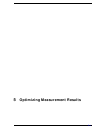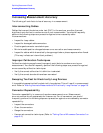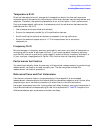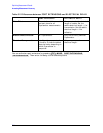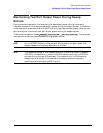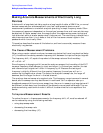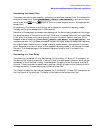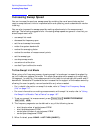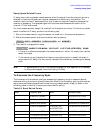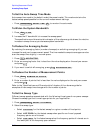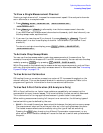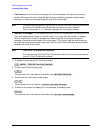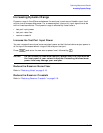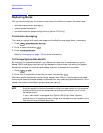
5-9
Optimizing Measurement Results
Making Accurate Measurements of Electrically Long Devices
Decreasing the Sweep Rate
The sweep rate can be decreased by increasing the analyzer’s sweep time. To increase the
analyzer’s sweep time, press and use the front
panel knob, the and keys, or the front panel keypad enter in the appropriate
sweep time.
Alternatively, the number of points may be increased for the same frequency range,
thereby reducing the sweep rate (in GHz/second).
Selection of the appropriate sweep time depends on the device being measured; the longer
the electrical delay of the device under test, the slower the sweep rate must be. A good way
to tell when the sweep rate is slow enough is to put the vector network analyzer into a
stepped mode of sweeping ( ), and
compare the data. In this mode, the vector network analyzer does not sweep the frequency,
but steps to each frequency point, stops, makes a measurement, then goes on to the next
point. Because errors do not occur in the stepped frequency mode, it can be used to check
the data. The disadvantage of the stepped frequency mode is that it is slower than
sweeping.
Decreasing the Time Delay
The other way to reduce ∆F is by decreasing the time delay, ∆T. Since ∆T is a property of
the device that is being measured, it cannot literally be decreased. However, what can be
decreased is the difference in delay times between the paths to the R channel and the B
channel. These times can be equalized by adding a length of cable to the R channel which
has approximately the same delay as the device under test.
This length of cable can be inserted between the R CHANNEL IN and OUT connectors on
the front panel of the analyzer. The delay of this cable must be less than 5µs.
Sweep Setup
SWEEP TIME [MANUAL]
Sweep Setup
SWEEP TYPE MENU
STEP SWP ON off



